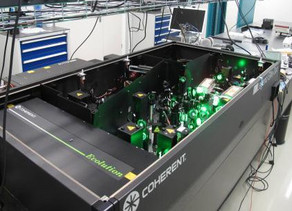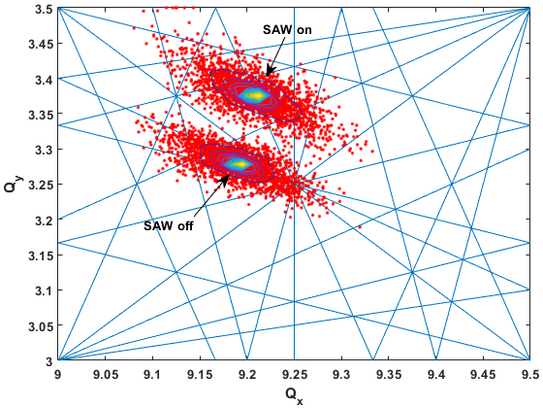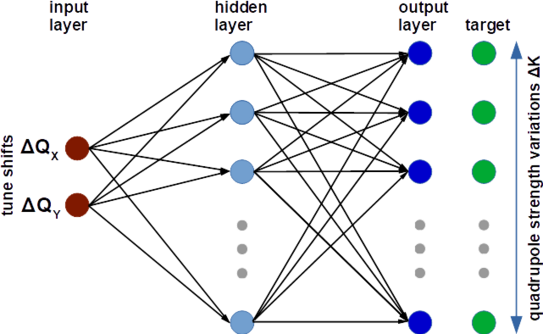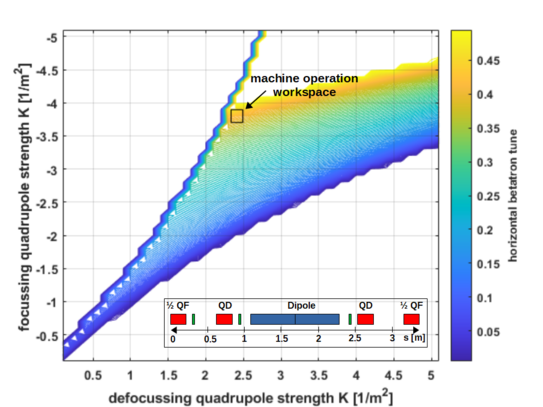Setting the operating points
The operating points (tunes) of a storage ring describe the number of so-called betatron oscillations of the stored particle beam per revolution. They are crucial tuning parameters for stable operation and must therefore be constantly monitored and readjusted if necessary. The tunes are set with the aid of beam-focusing quadrupole magnets. For this purpose, 3 horizontally and 4 vertically focusing quadrupole circuits are available, each of which is arranged in the arcs of the DELTA storage ring. For automatic control, a classic Proportional Integral Differential (PID) feedback system has been used for many years.
In a test scenario, this system was replaced with an ML-based control mechanism. For this purpose, quadrupole strengths (actuator data) were systematically and randomly varied, and the corresponding tune shifts (sensor data) were measured. These actuator/sensor measurement pairs serve as the dataset for supervised training of classical, "shallow" (not deep) feed-forward neural networks (see picture left). During training, the networks "learn" the correlation between changes in quadrupole strengths and shifts in operating points, and can subsequently be used for automatic correction. This approach was successfully employed for both the simulated storage ring and in real machine operation. Further details can be found in the internal report and in the IPAC-21 and ICALEPCS-21 conference papers.




![[Translate to English:] [Translate to English:]](/storages/delta/_processed_/1/2/csm_studium_seitenheader_1e3d243ce2.jpg)


